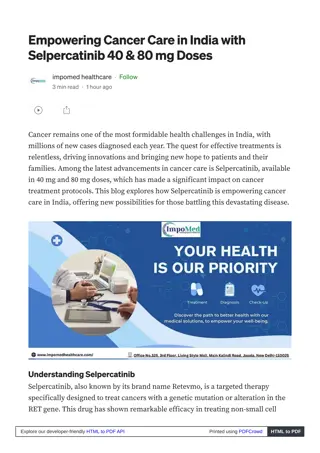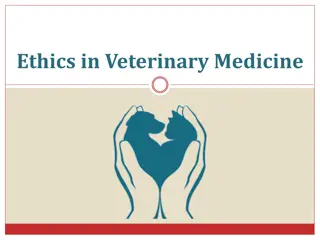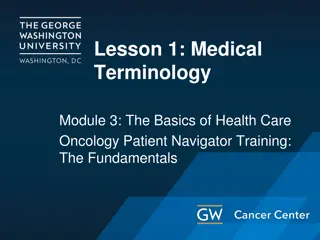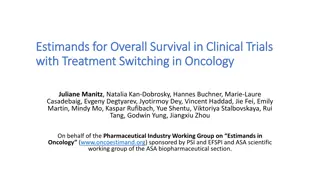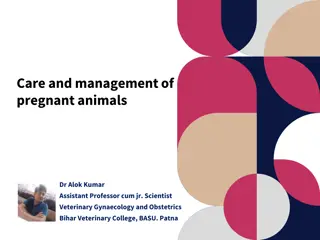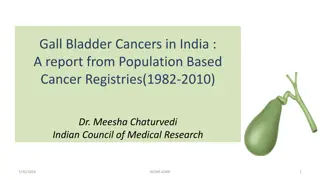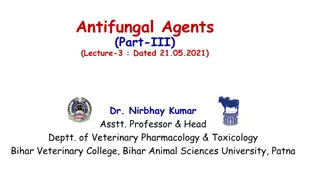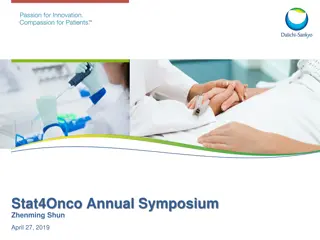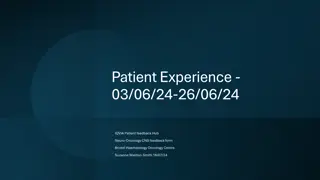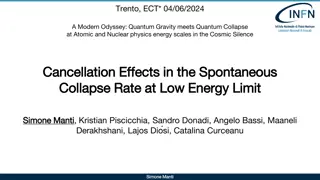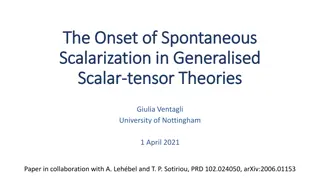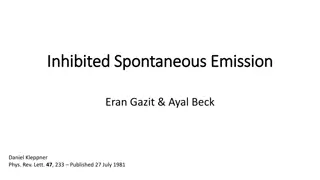Advances in Veterinary Oncology: Understanding and Treating Spontaneous Cancers in Animals
Veterinary oncology, led by Prof. David Killick, delves into the realm of spontaneous cancers in dogs, cats, and horses, mirroring the cancer evolution in humans. The field covers diagnosis through cytology and imaging to treatments like surgery, radiation, and emerging immunotherapy. University veterinary sites offer specialized services and research opportunities, emphasizing benefits to individual animals and generating new knowledge for better care.
Download Presentation

Please find below an Image/Link to download the presentation.
The content on the website is provided AS IS for your information and personal use only. It may not be sold, licensed, or shared on other websites without obtaining consent from the author.If you encounter any issues during the download, it is possible that the publisher has removed the file from their server.
You are allowed to download the files provided on this website for personal or commercial use, subject to the condition that they are used lawfully. All files are the property of their respective owners.
The content on the website is provided AS IS for your information and personal use only. It may not be sold, licensed, or shared on other websites without obtaining consent from the author.
E N D
Presentation Transcript
Veterinary oncology Prof. David Killick DipECVIM-CA FRCVS drk@liverpool.ac.uk Perhaps not well understood outside the field Spontaneous cancers Dogs, cats (and horses)
Veterinary cancers Spontaneous cancers More recapitulation of the evolutionary process of cancer development in people Similar range of cancers as suffered by humans But incidences vary Lifestyle cancers (drinking, smoking, sexually transmitted viruses) are less common
Veterinary Clinical Oncology Diagnosis Cytology, histopathology, IHC, flow, molecular pathology (developing) Staging with imaging (XR, US, CT, MRI) Treatment Surgery Radiation LINACC based photons and electrons 3d conformal, IMRT, VMAT etc Chemotherapy Immunotherapy (basic compared to modern human oncology but developing)
Veterinary radiation Patients staged Imaged in the treatment position to plan 3D radiation Dose and fractionation prescribed Patients treated under GA with port imaging as required
Typical university veterinary site Leahurst Neston nr Clatterbridge University oncology services Liverpool, Glasgow, Edinburgh, Cambridge, Bristol, RVC Veterinary hospital Patients Veterinary specialists Equipment Experimental animal facilities AWERB and ethics committees Space for development (generally keen to get biotech partners on site)
Veterinary clinical research Basis - Veterinary Surgeons Act Routine veterinary practice Investigation and management involving procedures and techniques likely to be of direct benefit to the individual animal(s) allows interventions which otherwise would be regulated Clinical veterinary research RVP plus work concurrently has an intention to generate new knowledge that benefits animals Home Office license under ASPA Planned work is not CVR AND involves procedures that breach the lower threshold outlined in ASPA. ASPA work can in principle be done on veterinary patients, but bureaucracy quite high See FAQ https://www.rcvs.org.uk/setting-standards/advice-and-guidance/faqs--routine-veterinary- practice-and-clinical-veterinary/
RCVS clinical veterinary research guidance Ethical review is required for CVR Client informed consent is required for CVR An option to withdraw without penalty (to client or animal) is mandatory and should be explicit in consent information Rarely exercised
RCVS clinical veterinary research guidance Novel procedures require a thorough harm / benefit analysis Is there evidence that likely benefits outweigh likely harms? Is procedure of equivalent benefit and likely to cause less harm than that currently available? Will the procedure improve overall animal welfare? Is there a rescue plan in place? Is the context appropriate (staffing, facilities, institutional support, insurance)? This is a general consideration for RVP.
Some things to consider Clinical Veterinary Research considerations Patients come with a client Generally interested in novel treatment Quite a few diseases without optimal treatment Keen on radiation treatments with lower numbers of fractionations (if treatment effect can be maintained) Concerned about costs Concerned about adverse effect severity Want a functional (ideally better!) pet back Reduces housing / feeding costs etc Need some client facing facilities CVR requires a vet to be recommending treatment Reasonable expectation of beneficial effect Flow of spontaneous diseases is variable Can be increased through paid for trials Anaesthesia of patients would need to be done by a veterinary surgeon Procedures outside those clinically indicated would come under ASPA No further regulatory training or reporting considerations for CVR
Conclusions regarding clinical veterinary research Fewer barriers to entry Limitations on what can be done with veterinary animals Additional PR clients etc Disease models may be more relevant Potential to have experimental and spontaneous animals on same site






